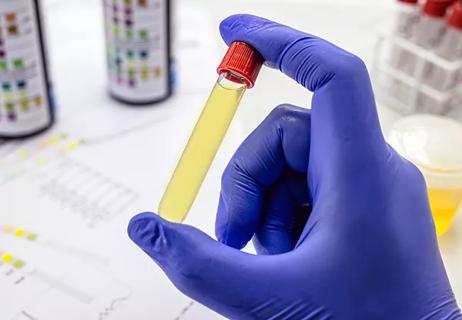Study identifies best range to target in patients

Hypokalemia and hyperkalemia are known comorbidities of chronic kidney disease (CKD), but physicians have not known the ideal range within which to maintain patient potassium levels to reduce mortality and progression to dialysis-requiring end-stage renal disease.
Cleveland Clinic is a non-profit academic medical center. Advertising on our site helps support our mission. We do not endorse non-Cleveland Clinic products or services. Policy
A recent study involving Cleveland Clinic physicians has found an answer: For patients with stage 3-4 CKD, mortality levels are lowest when serum potassium levels are kept between 4 and 5 mmol/L.
The study, published in the American Journal of Nephrology, examined Cleveland Clinic’s electronic medical record-based CKD registry. In it, 36,359 patients with two or more estimated glomerular filtration rate (eGFR) values of < 60 mL/min/1.73m2 more than 90 days apart and potassium levels measured from Jan. 1, 2005, to Sept. 15, 2009, were identified. Researchers defined hypokalemia as < 3.5 mmol/L and hyperkalemia as > 5.0 mmol/L.
Mean patient age was 72 years. Patients younger than 18 years and those diagnosed with end-stage renal disease (ESRD) needing dialysis or renal transplant before the date of second eGFR were excluded.
Researchers found serum potassium of < 3.5 mmol/L in 3 percent of patients, and > 5.0 mmol/L in 11 percent.
“In the multivariable logistic regression analysis, lower eGFR, diabetes and use of ACE inhibitors or angiotensin-receptor blockers were associated with higher odds of having hyperkalemia,” the study reports. “After adjustment for covariates including kidney function, serum potassium < 4.0 mmol/L and > 5.0 mmol/L were significantly associated with increased mortality risk, but there was no increased risk for progression to ESRD. When potassium was examined as a continuous variable, there was a U-shaped association between serum potassium levels and mortality.”
Georges Nakhoul, MD, a Cleveland Clinic nephrologist who was part of the study, says that the overall message to physicians is that letting potassium levels get too high or too low in CKD patients is risky.
“Physicians need to be sensitive to the importance of keeping potassium with the normal range,” he says.
He says the findings’ primary value is to give physicians a goal for managing these patients.
“We found that a significant number of patients had advanced CKD, stages 3 and 4,” he says. “There has been some talk recently in the literature that chronically low potassium can lead to kidney fibrosis and end-stage renal disease requiring dialysis. But when we looked at our data, we could not find any evidence that having low potassium puts a person at higher risk for end-stage renal disease.”
Physicians tend to be more sensitized to higher potassium levels than they are to low levels, he says.
“However, our data really show a lower potassium or a higher potassium level can be associated with significant side effects. Keeping potassium within normal parameters is the best approach,” he says. “These results make sense, but they hadn’t been proven scientifically before now.”
Potassium levels can be controlled by adding as well as subtracting medications from a patient’s regimen, Dr. Nakhoul notes, as higher levels can be an unwanted side effect. Levels also can be adjusted through diet and the use of supplements, he adds.

Clinicians should individualize dosing practices based on patient risk factors and preferences

Fully-automated process uses preop CT, baseline GFR to estimate post-nephrectomy renal function

Could mean earlier treatment, but also could have negative effects

Identifying barriers in the renal genetic assessment of Black patients

Getting patients to their goal blood pressure

Study highlights benefits of nephrologist-led urine sediment analysis

Using sequencing data to identify novel factors linked to kidney disease with unknown origin

Program plays key role in diagnosis and management of genetic kidney diseases